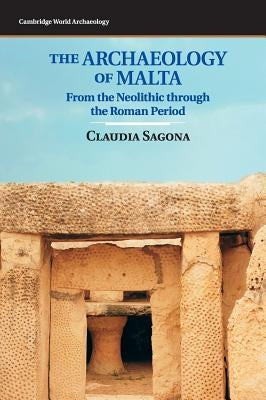1
/
of
1
Cambridge University Press
The Archaeology of Malta: From the Neolithic Through the Roman Period
The Archaeology of Malta: From the Neolithic Through the Roman Period
Regular price
$248.58 USD
Regular price
Sale price
$248.58 USD
Shipping calculated at checkout.
Quantity
Couldn't load pickup availability
The Maltese archipelago is a unique barometer for understanding cultural change in the central Mediterranean. Prehistoric people helped reshape the islands' economy and when Mediterranean maritime highways were being established, the islands became a significant lure to Phoenician colonists venturing from their Levantine homeland. Punic Malta also sat at the frontline of regional hostilities until it fell to Rome. Preserved in this island setting are signs of people's endurance and adaptation to each new challenge. This book is the first systematic and up-to-date survey of the islands' archaeological evidence from the initial settlers to the archipelago's inclusion into the Roman world (c. 5000 BC-400 AD). Claudia Sagona draws upon old and new discoveries and her analysis covers well-known sites such as the megalithic structures, as well as less familiar locations and discoveries. She interprets the archaeological record to explain changing social and political structures, intriguing ritual practices and cultural contact through several millennia.
Author: Claudia Sagona
Publisher: Cambridge University Press
Published: 08/25/2015
Pages: 470
Binding Type: Hardcover
Weight: 2.00lbs
Size: 10.30h x 7.10w x 1.60d
ISBN: 9781107006690
Review Citation(s):
Choice 03/01/2016
Author: Claudia Sagona
Publisher: Cambridge University Press
Published: 08/25/2015
Pages: 470
Binding Type: Hardcover
Weight: 2.00lbs
Size: 10.30h x 7.10w x 1.60d
ISBN: 9781107006690
Review Citation(s):
Choice 03/01/2016
About the Author
Sagona, Claudia: - Claudia Sagona is a Senior Fellow in Archaeology at the University of Melbourne. She is the author of several books on Malta, including Looking for Mithra in Malta (2009), and the editor of books including Ceramics of the Phoenician-Punic World (2011) and Beyond the Homeland: Markers in Phoenician Chronology (2008). Her articles have appeared in academic journals including Anatolian Studies, Anatolia Antiqua, Ancient Near Eastern Studies, Mediterranean Archaeology and the Oxford Journal of Archaeology. In recognition of her contribution to Malta, she was made an honorary member of the National Order of Merit of Malta in 2007.
Share


